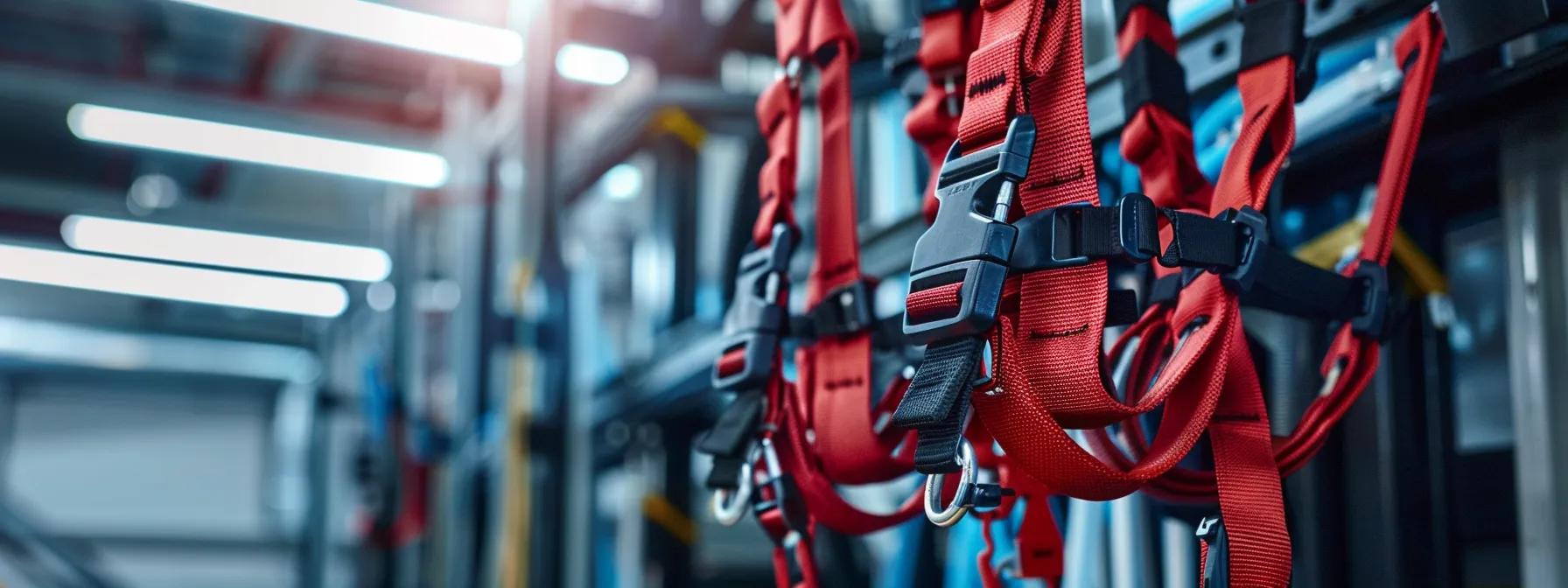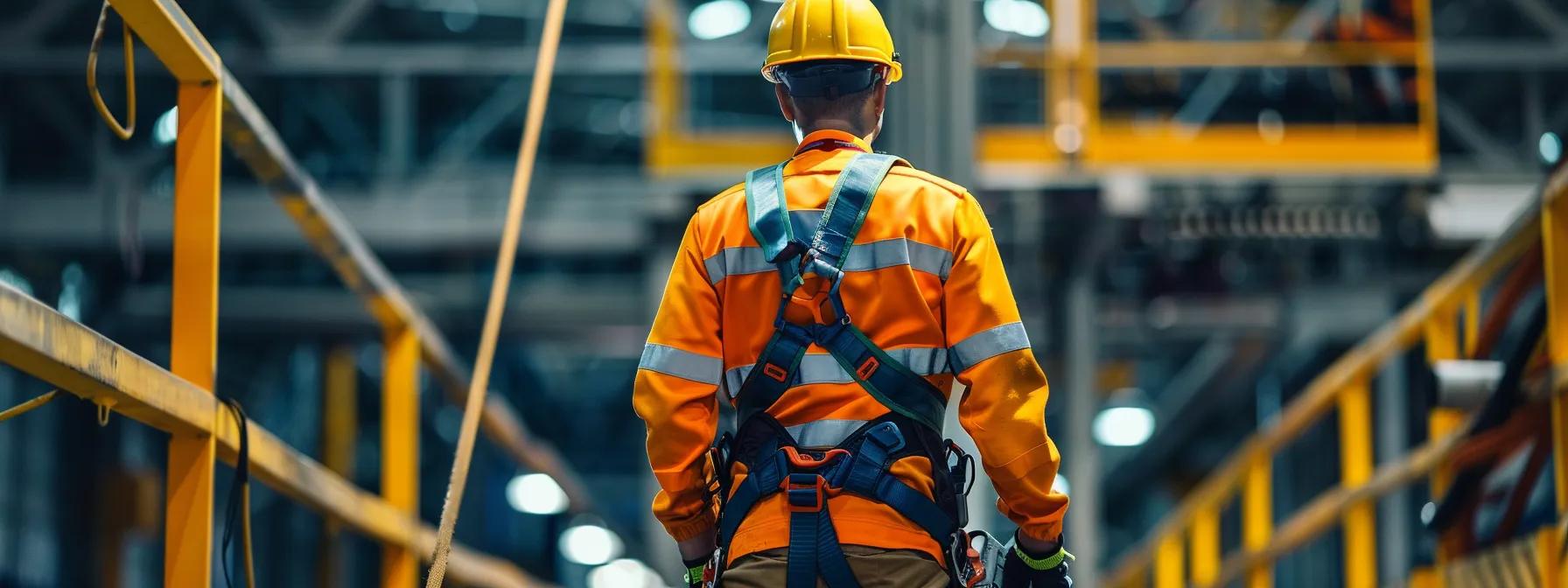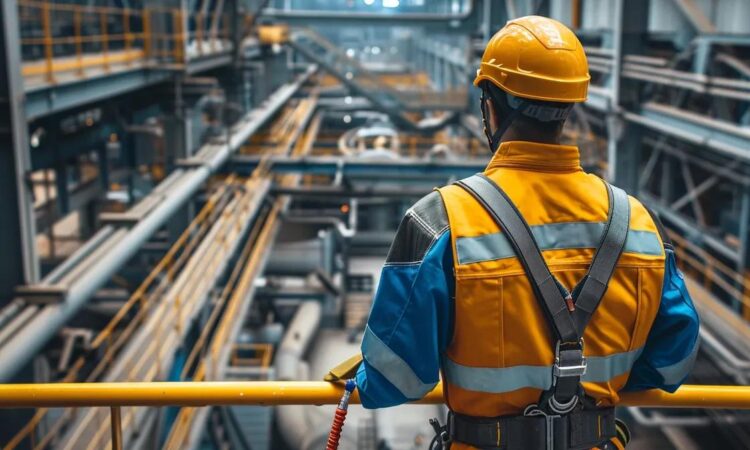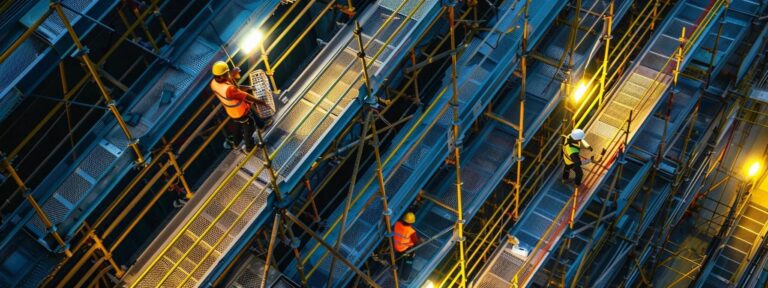Why Safety Harness Systems Are Essential for Overhead Fall Protection
us fall protection in overhead work sites is critical for preventing severe injuries and fatalities. Safety harness systems, when implemented properly through design-installation, deliver proven protection by arresting falls from height and distributing the arresting forces across the body. These systems, essential in industries we serve, require careful selection, inspection, and use to provide maximum benefit and annual maintenance for compliance with established safety standards.
Understanding the Critical Need for Overhead Fall Protection Systems
Overhead fall hazards occur when workers operate in environments where there is the risk of unprotected falls from elevated structures, open platforms, or dismantled structures. These dangerous falls can result in immediate impact injuries, internal trauma, or even death. The consequences of falls from height can be severe, causing prolonged disability and life-long medical complications, as well as significant economic losses for employers. Proactive overhead fall protection mitigates these risks by ensuring that safety harness systems, along with secondary support equipment, ladder systems, and guardrail systems, are integrated into work environments and that workers are trained in their proper use. Recognizing worksites that require robust overhead fall protection systems is a vital first step in preventing accidents; industries such as construction, maintenance on high-rise roofs, wind turbine inspection, and industrial manufacturing all require us fall protection solutions to protect their workforce.
Core Components of Effective Safety Harness Systems for Height Safety

Effective safety harness systems are built around several core components designed to work in unison for optimal fall arrest. The full body harness is regarded as a critical element because it provides secure support across the upper body, reducing the risk of suspension trauma by distributing fall forces evenly (a principle emphasized by us fall protection guidelines). Connecting devices, including carabiners, hooks, and specialized fittings, ensure that the harness components remain firmly integrated within the personal fall arrest system. Anchorage points are essential for establishing a secure connection to the structure, enabling the system to redirect the energy from the fall correctly, and when complemented with guardrail systems, offering enhanced stability. Lanyards and self-retracting lifelines, which act as shock absorbers (often detailed in Anchor text: lifeline-systems descriptions), further enhance the safety mechanism by reducing abrupt forces on the body. Ensuring compatibility among safety harness system components is paramount; manufacturers and safety professionals must verify that all elements adhere to constant industry standards and work seamlessly together to provide protection. Regular annual maintenance is also advised to ensure ongoing system performance. In many industrial settings, ladder systems complement safety harness solutions to broaden protective measures.
The Function and Benefits of Personal Fall Arrest Systems in Overhead Scenarios
Personal fall arrest systems operate by engaging the safety harness immediately once a fall is detected, thereby limiting the distance the worker falls before the system activates. The arresting forces are carefully managed by engineered components that absorb the relative impact; for example, our comprehensive design-installation approach ensures that each part functions as intended, thereby protecting the user from severe trauma. This instantaneous reaction not only saves lives but also enhances worker confidence, allowing them to perform tasks at height with the assurance that their wellbeing is safeguarded. These systems offer versatility across a wide range of industries—from construction and manufacturing to maintenance and logistics, which aligns with the industries we serve—and significantly reduce injury severity when properly deployed. For continued system performance, annual maintenance is recommended. When workers observe the benefits and reliability of personal fall arrest systems, such as reduced downtime due to accidents and lower insurance costs, they are more likely to comply with safety regulation and training protocols. To further support safety initiatives, get a free quote and explore more about us fall protection options.
Selecting Appropriate Safety Harness Systems for Overhead Applications

The process of selecting a safety harness system begins with assessing the specific risk factors present in the work environment, taking into account the needs of industries we serve. When evaluating hazard scenarios, it is crucial to match the safety harness system with the task requirements—this includes analyzing the height, potential fall distance, and nature of the overhead structure. For comprehensive protection, a design-installation approach may be applied, aligning systems with anchor text: lifeline-systems guidelines. Comfort and fit are also vital considerations; a system that is cumbersome will hinder compliance and may lead to improper use, reducing its effectiveness as prescribed by us fall protection standards. There are different types of safety harnesses available, such as full body harnesses, positioning belts, and specialized climbing harnesses, each designed to meet specific needs; additional safety measures like ladder systems and guardrail systems should also be considered depending on the work environment. Material durability, including components made from high-strength webbing, industrial-grade steel, or energy-absorbing polymers, directly influences the longevity of the system and its ability to withstand repeated falls or harsh conditions, which is why regular annual maintenance is essential. In many cases, organizations create detailed checklists that compare various safety harness systems based on risk assessment, worker feedback, and regulatory compliance. For more insights, visit our blog or get a free quote to discuss tailored solutions.
Table: Comparison of Safety Harness System Components
Before moving on, the following table encapsulates core attributes of common safety harness components and their benefits:
| Component | Primary Function | Material/Technology | Key Benefit |
|---|---|---|---|
| Full Body Harness | Distributes fall forces evenly | High-strength polyester/webbing | Reduces suspension trauma and injury risk |
| Connecting Devices | Links harness to anchorage system | Forged aluminum/carbon steel | Ensures secure attachment and load transfer |
| Anchorage Points | Provides stable connection | Fixed structural anchors, beam fittings | Offers stable support during a fall |
| Lanyards & Self-Retracting Lifelines | Absorbs shock during a fall | Energy-absorbing polymers | Minimizes impact force |
This table summarizes the engineering attributes of major components and clarifies their roles in delivering comprehensive safety at elevation.
Implementing and Maintaining Overhead Fall Protection Systems Correctly
Proper implementation of overhead fall protection systems requires a strict adherence to design-installation, handling, donning, adjustment, and regular inspection procedures. Workers must receive detailed training on correct methods for donning and adjusting their safety harnesses, as improper methods can negate the system’s effectiveness. Regular inspection protocols for all components, including those scheduled for annual maintenance, are crucial; visual examinations and functional tests should be conducted on a schedule that complies with both internal safety standards and industry regulations. Documenting every inspection and maintenance activity ensures that any signs of wear and tear, such as fraying webbing or corroded connectors commonly seen in guardrail systems, are identified and replaced promptly. Safety managers are encouraged to lead by example and hold regular training sessions that refresh and reinforce proper practices for using personal fall arrest systems. When workers maintain vigilance and follow established protocols, the system continues to perform to its designed standard, thus reinforcing a safety-first culture in the workplace.
Regulatory Standards and Best Practices for Safety Harness Systems

Safety harness systems for overhead protection must comply with regulatory standards set by organizations such as OSHA and ANSI, and effective design-installation of these systems further ensures their reliability. Adhering to OSHA guidelines for overhead fall protection requires that employers provide fall protection at designated work areas—with us fall protection measures in place—and that workers are trained on the effective use of personal protective equipment. Similarly, meeting ANSI standards for personal fall arrest systems confirms that the harnesses, lanyards, and anchorage systems (anchor text: lifeline-systems) are robust enough to arrest falls safely. Employer responsibilities in providing safety harness systems include ensuring all equipment is certified, undergoing annual maintenance, maintained, and replaced as necessary. Equally, worker accountability is emphasized; employees must use fall protection gear every time they work at heights, observe inspection protocols, and report any concerns immediately. Cultivating a safety-first culture involves continuous reinforcement of best practices through training, monitoring, and active engagement from both management and staff.
Frequently Asked Questions
Q: What defines an overhead fall hazard in the workplace?
A: An overhead fall hazard is any situation where a worker is at risk of falling from an elevated platform or structure due to an absence of proper guarding or protection systems, such as ladder systems and guardrail systems. Regular annual maintenance, as recommended by us fall protection standards in the industries we serve, can help mitigate these risks. For further insights on design-installation and best practices, check out our blog.
Q: How does a full body harness reduce fall-related injuries?
A: A full body harness distributes the arresting force over the torso, thighs, and pelvis, minimizing the impact on individual body parts and reducing the risk of suspension trauma after a fall occurs. It is a key component in us fall protection and is often featured in design-installation projects, especially those involving ladder systems and guardrail systems. For more insights on improving safety measures, visit our blog and get a free quote to suit your needs.
Q: What role do anchorage points play in personal fall arrest systems?
A: Anchorage points, as highlighted in lifeline-systems, provide the secure connection required for a fall arrest system to perform effectively. In addition, proper design-installation and annual maintenance play key roles in ensuring that the energy from a fall is safely redirected and that the system remains stable during a fall event. For further insights, please visit our blog or get a free quote from us fall protection experts.
Q: Why are regular inspections important for safety harness systems?
A: Regular inspections help identify wear and tear, damage, or component failure early on, ensuring that the equipment remains reliable and compliant with safety standards to protect workers from falls. Incorporating annual maintenance checks during the design-installation phase as well as routine evaluations of ladder systems and guardrail systems further enhances overall us fall protection.
Q: How do regulatory standards like OSHA and ANSI impact the use of safety harness systems?
A: OSHA and ANSI guidelines set performance criteria for safety harness systems that ensure the equipment effectively protects workers by meeting rigorous technical and safety requirements, thereby reducing the risk of workplace falls. In addition, implementing design-installation best practices along with regular annual maintenance is essential to achieving optimal us fall protection.
Q: Can personal fall arrest systems be used in all industries?
A: Yes, personal fall arrest systems are versatile and used across a variety of sectors including construction, maintenance, industrial manufacturing, and any other area where workers are exposed to fall hazards (industries we serve) from heights or overhead surfaces. Their design-installation process is customized to meet industry safety standards and they often require annual maintenance to ensure continuous protection. With solutions like us fall protection, these systems offer comprehensive safety for workers in diverse environments.
Q: What additional benefits do self-retracting lifelines offer?
A: Self-retracting lifelines provide dynamic shock absorption and automatically retract, reducing slack and ensuring that the fall arrest system engages quickly to minimize the distance and impact of a fall. Leveraging design-installation expertise, these systems have become a trusted choice for us fall protection professionals serving a wide range of industries we serve. For further information on anchor text: lifeline-systems and to keep updated with the latest innovations, visit our blog or get a free quote to learn more.
Q: How should organizations document inspections and maintenance activities?
A: Organizations should maintain detailed logs that record inspection dates, issues found, actions taken, and replacement of defective parts to ensure that safety harness systems, ladder systems, and guardrail systems remain in optimal working condition. This careful documentation is also critical for annual maintenance planning and assists in design-installation reviews across the industries we serve.
Final Thoughts
The integration of overhead fall protection systems in the workplace is essential for safeguarding employees at height through expert design-installation services. Safety harness systems, comprising full body harnesses, connecting devices, anchorage points, guardrail systems, and lanyards, work seamlessly together to arrest falls and minimize injury severity. Adhering to best practices—including proper selection, regular inspections, annual maintenance, and compliant training with OSHA and ANSI guidelines—ensures maximum protection and boosts worker confidence. As industries evolve and automation increases, proactive fall protection remains an indispensable measure for us fall protection, driving both safety and productivity while protecting lives in high-risk environments. Interested parties can learn more about our about-us page, discover the industries we serve, and catch our latest updates on the blog.



